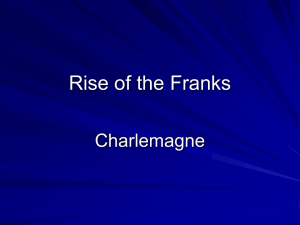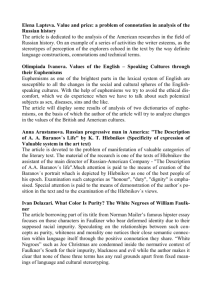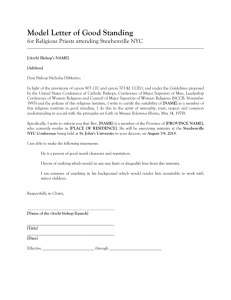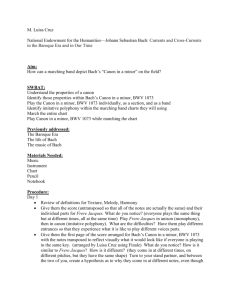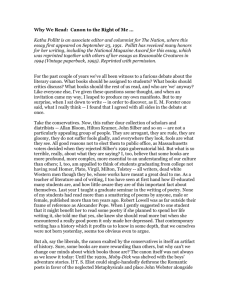V2 GPE template - CFS - 6Mar2012
advertisement
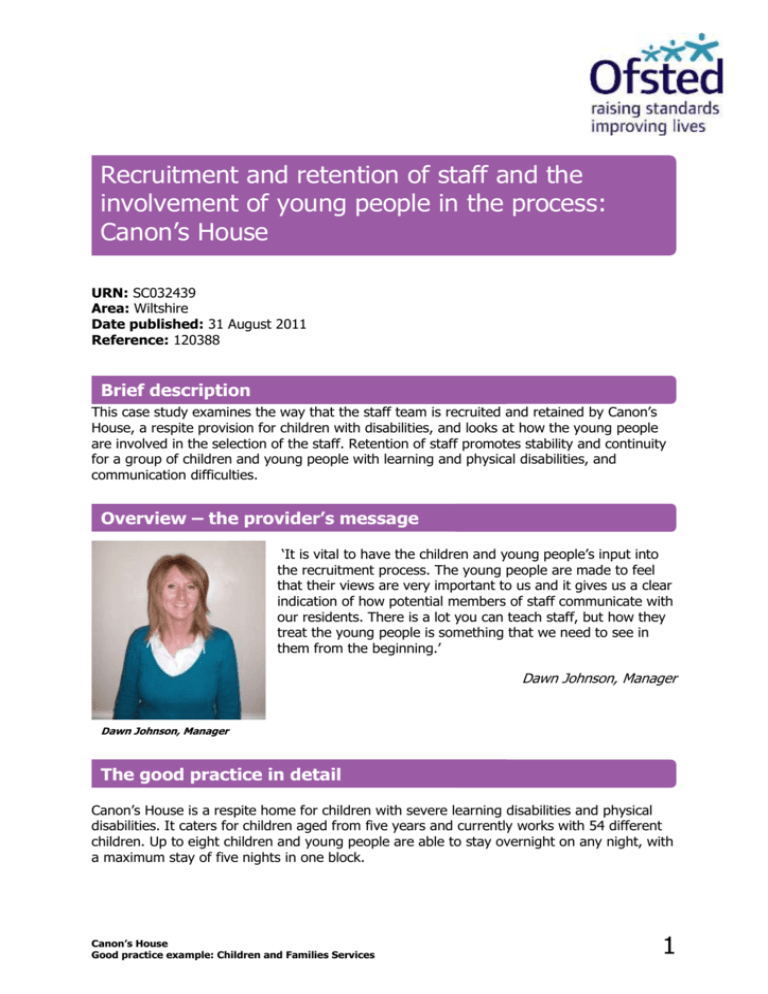
Recruitment and retention of staff and the involvement of young people in the process: Canon’s House URN: SC032439 Area: Wiltshire Date published: 31 August 2011 Reference: 120388 Brief description This case study examines the way that the staff team is recruited and retained by Canon’s House, a respite provision for children with disabilities, and looks at how the young people are involved in the selection of the staff. Retention of staff promotes stability and continuity for a group of children and young people with learning and physical disabilities, and communication difficulties. Overview – the provider’s message ‘It is vital to have the children and young people’s input into the recruitment process. The young people are made to feel that their views are very important to us and it gives us a clear indication of how potential members of staff communicate with our residents. There is a lot you can teach staff, but how they treat the young people is something that we need to see in them from the beginning.’ Dawn Johnson, Manager Dawn Johnson, Manager The good practice in detail Canon’s House is a respite home for children with severe learning disabilities and physical disabilities. It caters for children aged from five years and currently works with 54 different children. Up to eight children and young people are able to stay overnight on any night, with a maximum stay of five nights in one block. Canon’s House Good practice example: Children and Families Services 1 In the past, staff were recruited following a formal interview. However, a few years ago, the manager realised that they were recruiting people who were able to answer the formal questions but, once successfully appointed, the degree of disability of the children was not really what they had expected. And so they changed their recruitment processes to ensure that competent staff were recruited, but most importantly, staff who engaged with the young people at the home and worked hard to understand them and meet their needs. When staff are recruited to Canon’s House, they undergo a two-day process of interviews and visits to the home to ensure that they are the right person for the job. Applicants who have been shortlisted are invited into the home to join the young people before their evening meal. The reactions, comments, expressions and body language of the children and young people are recorded to ensure that their feelings are fed into the selection process. The following day, a formal interview and written test are held to offer an all round perspective and to test case-recording skills. If the young people’s reactions to a candidate are not good then s/he will not be appointed. Over the weeks following the appointment, the young people’s reactions are closely monitored to ensure that staff appointed are being well received. All references are checked and referees are phoned for verbal feedback on each candidate, with a view to ensuring stability and quality of care for the young people. Staff have a six-month probationary period during which they are assessed to ensure that they are right for the home. There is also a comprehensive induction process which supports and trains new staff. The probationary period may be extended, or staff can be dismissed during this period if they are Self-help skills not fitting in as well as had been hoped. Initially, new staff are supernumerary, they shadow shifts at all times of the day and at the weekend to understand how things work in the home and to build the confidence of the children and young people. Also, new staff undertake a couple of days in the office reading and ensuring that they understand policies around for example, vetting of visitors, writing diary notes and safeguarding. …changed their A culture of learning and continuous improvement is supported in the home by a wealth of training on offer from Wiltshire Council and also in-house. All staff undertake mandatory training in a range of areas and, every year, a training programme is designed and organised to meet the ongoing learning needs of the staff group, or to understand the specific needs of particular young people who are attending at the time. Once a year, all 55 staff will attend a fun development day designed to foster good working relationships and ensure an ongoing culture of cooperation. ‘We have encouraged a culture of openness and honesty, where conflict is minimised between staff and everyone feels valued and listened to’, says Dawn Johnson. ‘We discuss people’s frustrations early and then all work 2 recruitment processes to ensure that competent staff were recruited, but most importantly, staff who engaged with the young people at the home and worked hard to understand them and meet their needs. Canon’s House Good practice example: Children and Families Services together to improve things. If you invest in people and listen, you develop a nice working environment. Staff are very supportive of each other and want to improve things all the time so performance is taken seriously. We tackle underperformance by being honest about people’s weaknesses and dealing with them early on. We try to avoid using formal procedures if at all possible.’ Each year, as well as the ongoing training and development programme, a theme is chosen to improve a certain aspect of the care that is provided to the children and young people. Last year, the theme was water therapy, with all staff involved in fundraising for a new pool and in raising awareness of the benefits of water therapy. This year, the theme is sleep trials. Sleep issues can be one of the main frustrations for parents of children with severe learning disabilities, and one of the main reasons that children are referred for overnight stays at Canon’s House. During this year, all staff will be working on the sleep trials project, working with families before the problem escalates and Preparations for fete therefore reducing referrals for overnight stays. Each year, all staff are committed to the one identified priority area so clear progress can be seen. The process also fosters good working relationships as everyone, including administrative staff, is involved. These processes ensure that the right staff are chosen. Once people begin to work for Canon’s House they seem to stay. The average length of service for the current cohort of staff is 19 years, with some turnover bringing fresh ideas and faces to the team. Many of the staff who leave maintain contact with the home by becoming bank staff to cover absences and sick leave. Are you thinking of putting these ideas into practice; or already doing something similar that could help other providers; or just interested? We’d welcome your views and ideas. Get in touch here. To view other good practice examples, go to: www.ofsted.gov.uk/resources/goodpractice Canon’s House Good practice example: Children and Families Services 3





